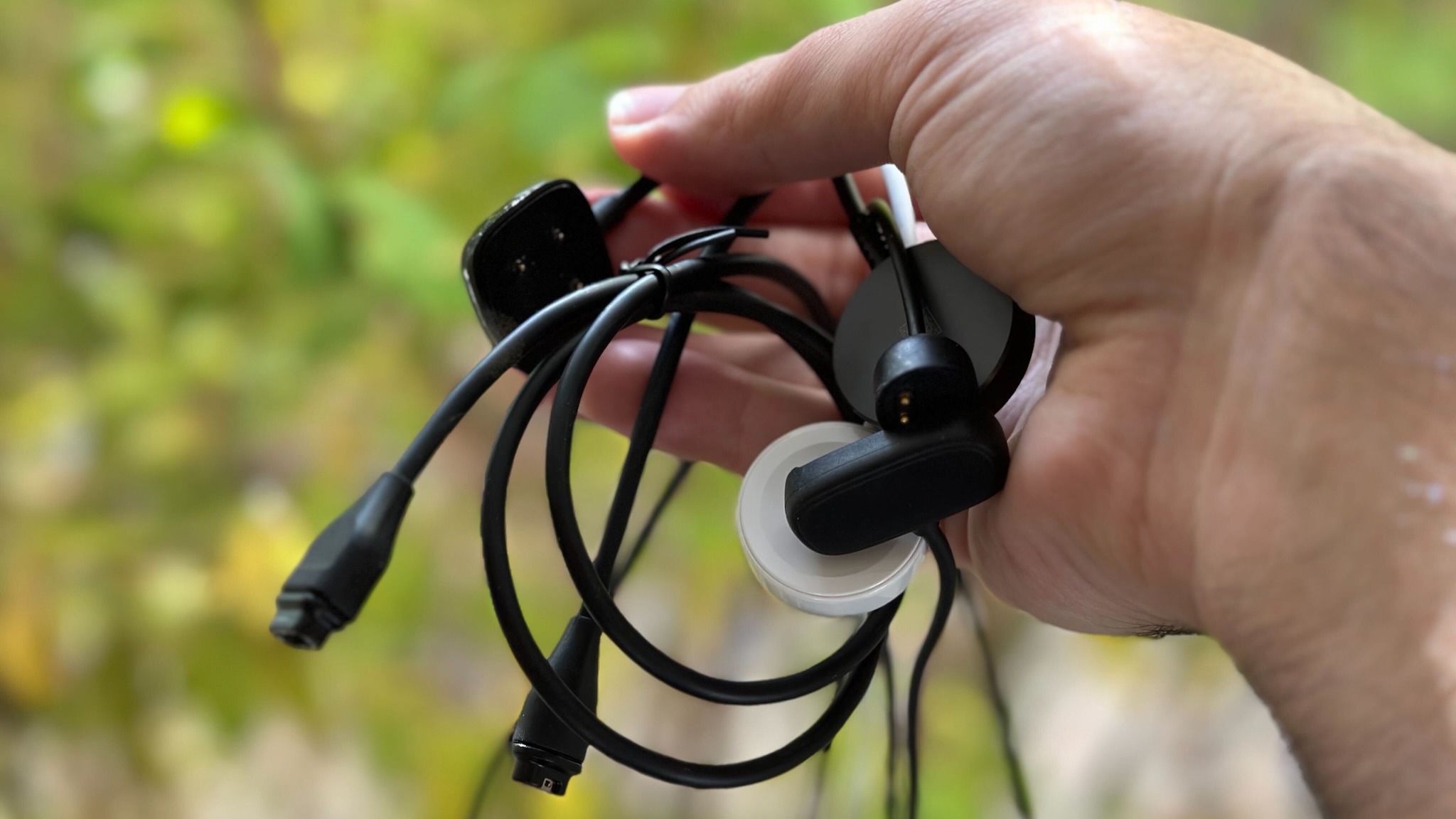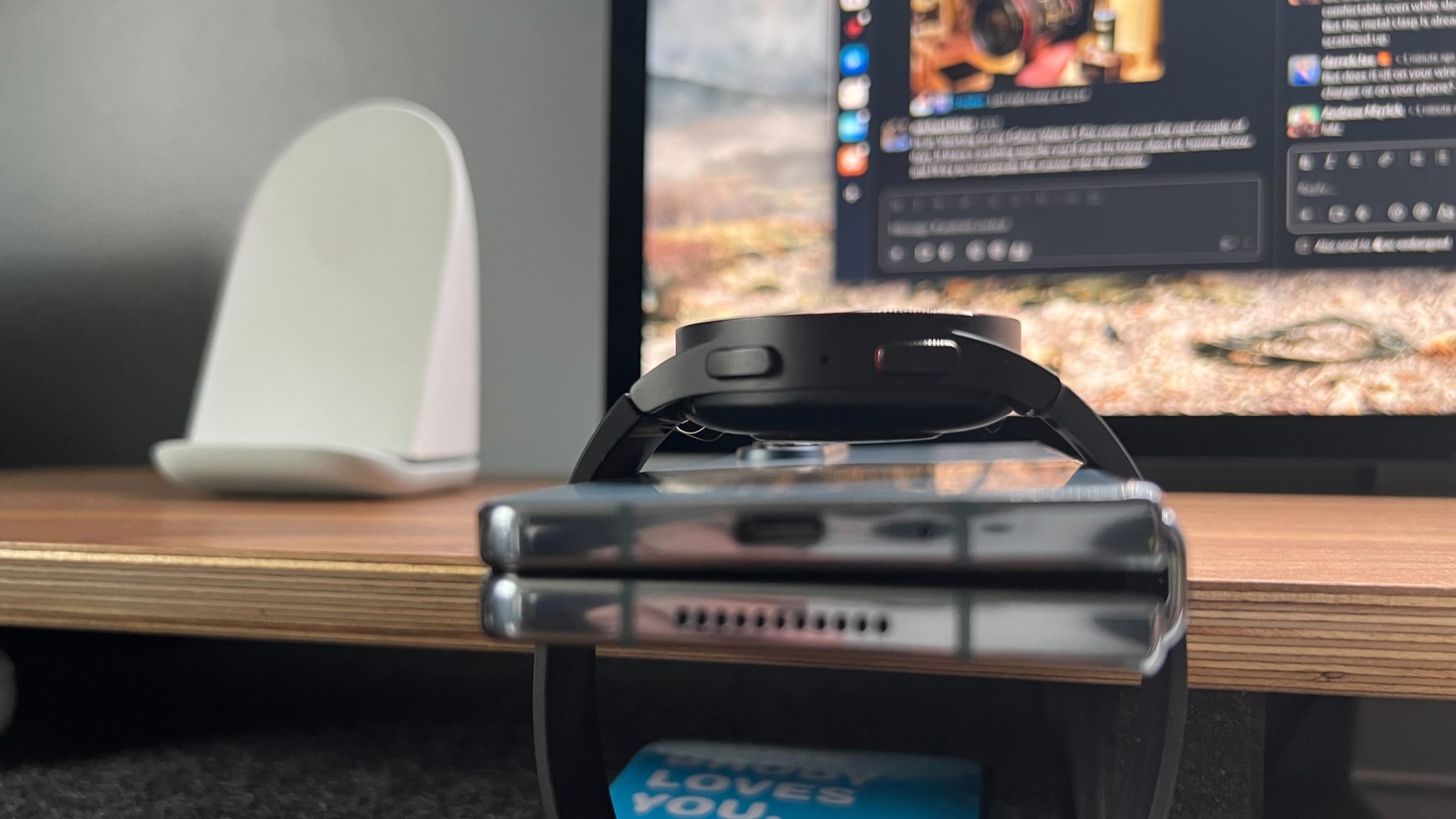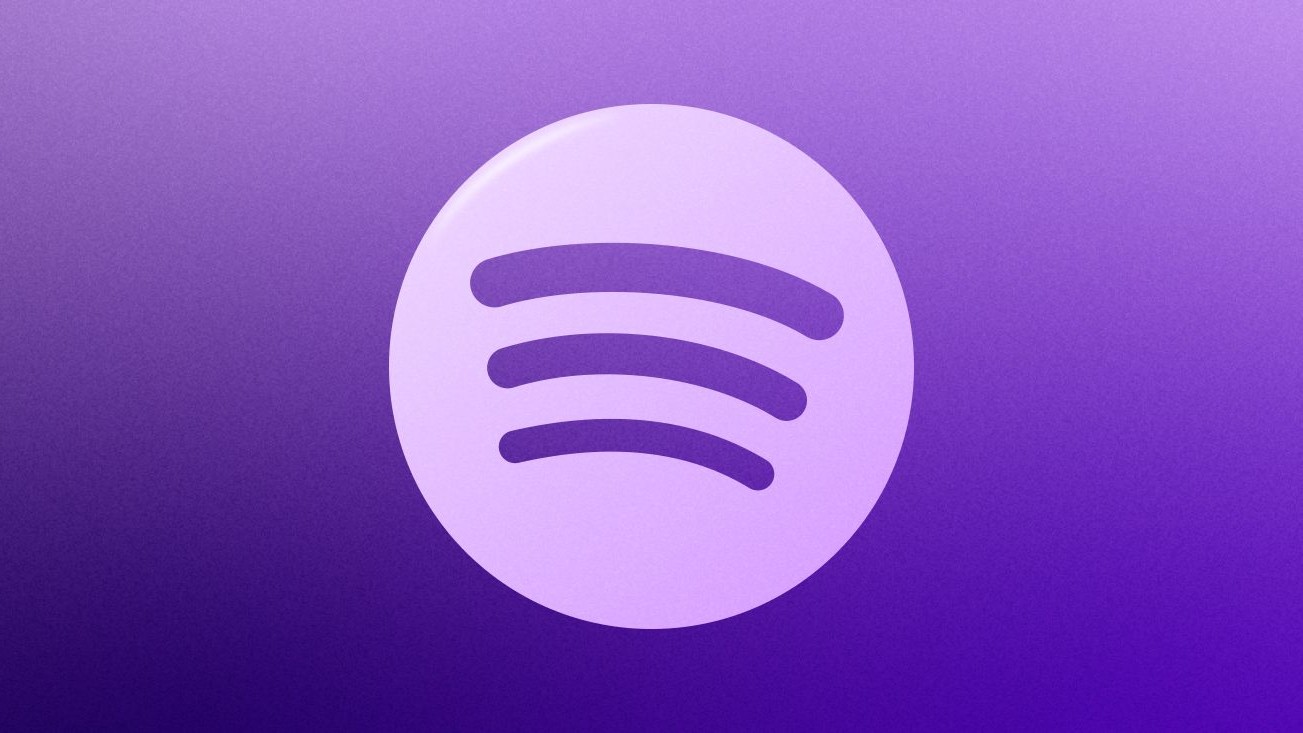Why smartwatch charging is an unsolvable mess
With iPhones forced to adopt USB-C, I'd love wearables to get a universal charging standard next. But it's unlikely to ever happen.

As a long-time iPhone user who eventually switched to Android, I'm fully on board with the EU forcing Apple to adopt USB-C, even if it may take until the iPhone 16 to happen. Apple claims this will create e-waste, but there's nothing more wasteful than forcing people to buy new cables every time they switch devices.
A universal charging standard works. So with government legislation "solving" phone charging, I turned my thoughts to the tangled, anarchic web of wearable and smartwatch chargers, which could certainly use some kind of intervention — governmental or otherwise.
Some brands, like Garmin, have adopted a single standard for their own devices. Others like Amazfit use one charger type for watches and another for fitness trackers. And then you have brands like Fitbit that practically invent a new charger for every other watch they make. And regardless of which brand you choose, your cables become completely useless if you switch to a new tracker or watch.
"Wearables come in far too many shapes and sizes and enforcing a universal charging standard is likely going to do more harm than good."
Smartwatch charging is the poster child for e-waste. So I asked myself, "Why can't smartwatches all use the same charging standard, too?" But Jitesh Ubrani, IDC's research manager of worldwide device trackers, quickly shot down my plan.
"Wearables come in far too many shapes and sizes and enforcing a universal charging standard is likely going to do more harm than good at this stage in the market," he warned me.
"Regulating a charging standard today would stifle innovation that would likely hurt consumers and governments even more than having multiple chargers."
Smartwatch makers have reason to be messy

Most major Android watch brands and Apple Watches have started to use "USB-C charging," but each with a proprietary magnetic wireless pad that lets each brand set their own coil size that fits with whatever new sensors and chips they've added that year.
Get the latest news from Android Central, your trusted companion in the world of Android
You end up with weird situations where the Pixel Watch unofficially charges on a Qi charger for some but not for others, depending on which wireless charger you own. It also connects to the official Galaxy Watch 5 charger, but Samsung's watch doesn't charge on Google's.
When you see epic fails like the Galaxy Watch 5 Pro being unable to use reverse wireless charging because Samsung's default watch band doesn't let it lie flat, it's clear that most watch designers can't think so far ahead as to follow a strict charging standard, because a watch blueprint can be far more variable than a smartphone.
"Smartwatches lack the ubiquity of smartphones and by forcing companies to adopt certain technologies, governments risk eroding price competitiveness and slowing growth within the smartwatch space," Ubrani explained.
If adopting a proper Qi standard, or using the same coil size as in past generations, means abandoning key features that would attract new buyers, of course, companies will just make a new cable, even as they talk about all their new green initiatives.
Smartwatch designs are a delicate balancing act, and a mandated wireless charging coil would stifle innovation in other areas.
That especially applies to fitness trackers and smartwatches because they're designed to be as petite as possible while maximizing battery life. Each company handles this differently, which means a charger's contact points or pogo pins probably won't slot properly for another brand's tracker, even if they're the same size.
Perhaps the one universal "standard" for fitness watch chargers is that, well, they suck! Direct pogo pin ports charge fast enough, but you'll plug them in only to find that you didn't perfectly slot it and the watch didn't charge. Magnetic chargers, too, have to be placed perfectly to get the watch to register it.
But at least they're better than the bulky chargers of yester-year that clamped onto trackers. And we can hope that these brands will continue to improve over time. But if a government agency mandated that they use the same standard, it'd be difficult to say what that standard should be!
None of them are as widespread or effective as USB-C. It's all just a bunch of Lightning-esque cables that never strike the same place twice. And if Garmin watches added Qi charging but lost days of battery life or got even bulkier in exchange, I guarantee most of its fans wouldn't like the adjustment.
Waiting for the tech to catch up

In the immediate future, Ubrani believes that brands like Fitbit have started to catch on to the fact that "too many chargers aren’t good for business and they are already making moves to reduce diversity." They'll keep their own charging strategy rather than look to others, but will probably stop releasing cables that become obsolete within a year or two.
If we look specifically at lifestyle watches, Ubrani says that " I can see wireless charging becoming more ubiquitous in the coming years as costs come down and power consumption amongst smartwatches is reduced, thereby making wireless charging more viable."
At that stage, which he says is "years away," regulators could "step in and mandate" the tech for outstanding brands. But those brands are likely to fight back just as much as Apple.
Case in point, when it launched the Fossil Gen 6 Wellness Edition, Fossil told us that adding wireless charging "would increase the size of the watch and that it is just too slow." Instead, it uses a charging pad with contact points, and our reviewer said that it charges "incredibly fast and can go from nearly dead to full in almost no time at all."
We may have to settle for a Wild West of charging cable standards, because there isn't an undisputed "best" option.
USB-C isn't just the most widespread phone charging option; it's the undisputed best option. Now, the Apple Watch Series 8 and Galaxy Watch 5 can use USB-C magnetic charging for a decent boost in speed, but would forcing smaller brands like Fossil to copy them be fair? Ubrani says "absolutely not."
If someone were to mandate a universal standard, would they choose based on its pervasiveness or quality? It's a tricky question to answer. And because smartwatches just aren't as popular or vital to daily life as smartphones, governments might ignore the question for a long time, as dumpsters and closets fill up with useless cables.
I came into this discussion ready to hand out some autocratic charging cable czar ruling about one charging standard all wearables should eventually adopt. But I think it's most likely that the eventual USB-C equivalent hasn't been designed yet. Otherwise, we'll all just have to settle for a Wild West of charging cable standards for another decade or so.

Michael is Android Central's resident expert on wearables and fitness. Before joining Android Central, he freelanced for years at Techradar, Wareable, Windows Central, and Digital Trends. Channeling his love of running, he established himself as an expert on fitness watches, testing and reviewing models from Garmin, Fitbit, Samsung, Apple, COROS, Polar, Amazfit, Suunto, and more.
